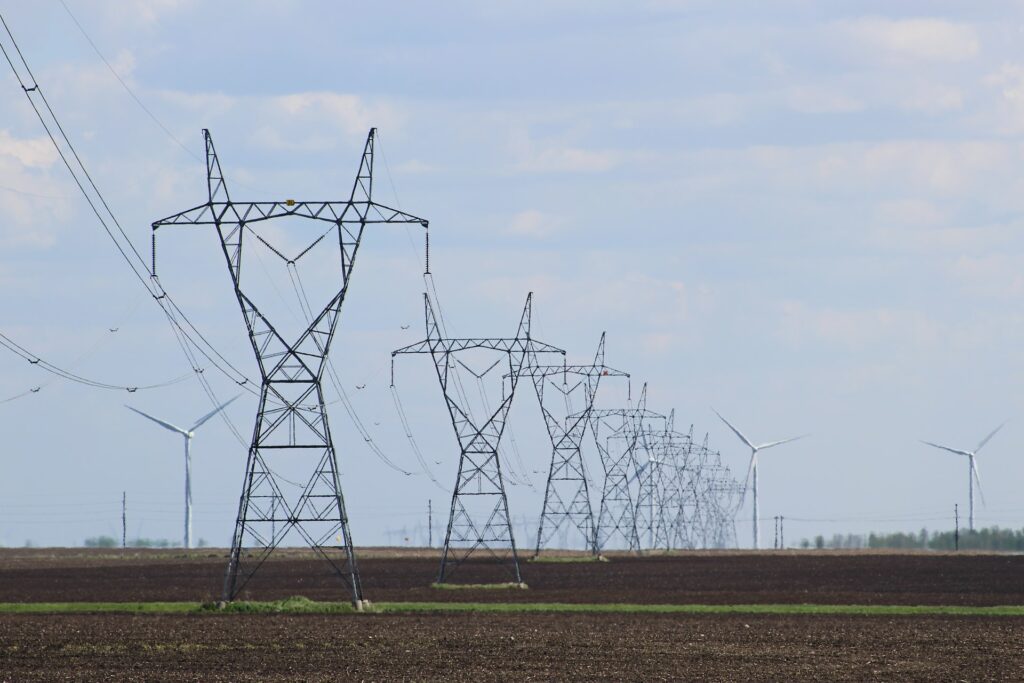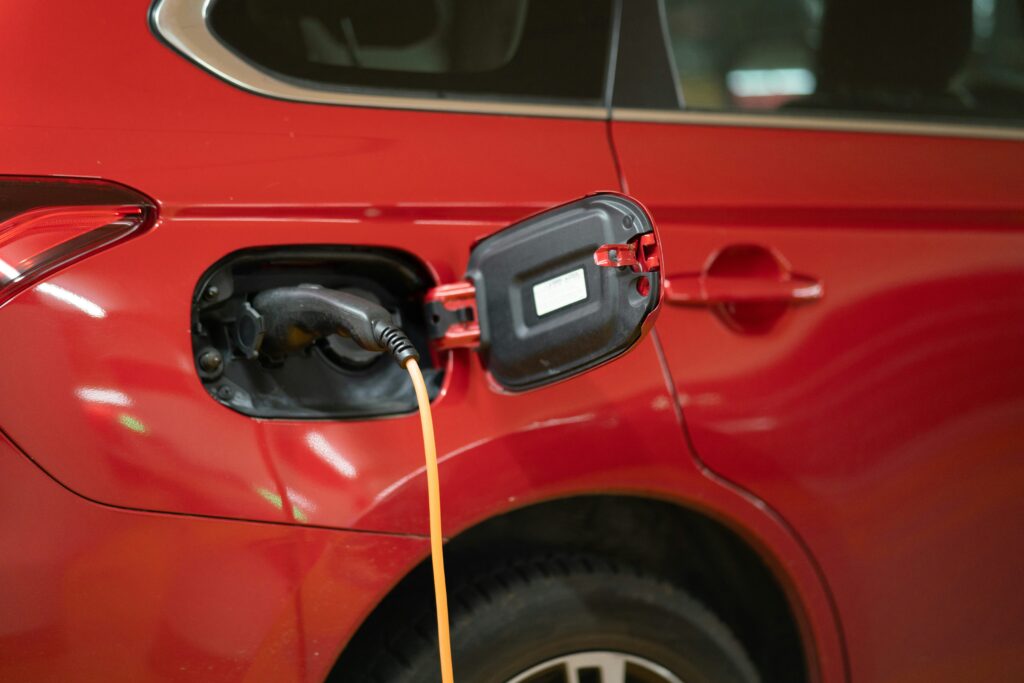It might sound like the latest industry buzzword, but there’s more to electrification than meets the eye.
At its core, electrification is the key to energy transformation. While the United States struggles with global warming fears and aging grids, it can harbor new clean energy production.
But what is electrification, and why is everyone so excited about it?
The concept behind electrification is simple: making non-electric things electric.
From electric ovens and heating systems to cars and lawnmowers, products are converting from gas power to electricity. Even our country’s energy production is slowly shifting to cleaner sources.
Several industries are leading the electrical sea change, including the transport sector, agriculture, manufacturing, and buildings. Moving away from fossil fuels will take time, but electrification could make our lives easier, safer, and more efficient.
Electrification sounds great at first glance, but how does it affect our industries, workplaces, and homes?
For utilities, it means developing more ways to integrate solar, wind, and hydropower into the grid more efficiently. According to the Energy Information Administration (EIA), about 60% of our electricity generation comes from fossil fuels, including natural gas and coal. Only 21% of our power comes from renewables like solar, hydro, and wind power.
As renewable energy sources come online, it’s up to utilities to connect them to power grids. Eventually, we may rely less on oil and natural gas for power, reducing air pollution and greenhouse gas emissions.
What does an electrified business look like?
Companies may feature more electric-powered machines, limiting greenhouse gases and pollutants. They can also save money by switching to electric systems, including heat pumps, forklifts, and fleet vehicles. This will improve our nation’s carbon footprint and put us one step closer toward reaching our carbon neutrality goals.
The result is a safer environment with less exposure to toxic fumes, fire risks, and cost savings.
Homeowners also have a role to play in electrification. Some people may be willing to buy an electric vehicle (EV) or induction cooktop to replace fossil fuel products. Others may generate their own electricity using rooftop or backyard-mounted solar energy systems.
Buying electric-powered products reduces greenhouse gases while saving homeowners money over time. Yes, electric vehicles and solar panels are expensive to buy but are more cost-effective to operate over their lifespan.
No matter how companies, utilities, and homeowners do it, the goal doesn’t change. The country must change its energy consumption to fit the current situation, and electrification does that.
As people find ways to divest from oil and gas products and address climate change, electrification becomes a self-fulfilling prophecy.
The point of electrification isn’t to force people to give up their gas stoves and buy electric cars. If anything, it’s only one step toward improving the electrical grid while reducing carbon emissions.
So far, the movement has had a few wins mixed in with some sub-par results. Although the U.S., United Kingdom, Japan, and other European countries are cutting emissions, global emissions are still rising. China, which has a massive population, is industrializing, requiring incredible power consumption.
The result is higher emissions from China outpacing decreases from several of the world’s leading reducers combined.
If done correctly, electrification can spur clean energy initiatives, encourage healthier lives, and promote renewable energy.
This isn’t to say the world is ditching fossil fuels tomorrow for an infinite stretch of solar panels, either. Oil and gas will be part of our energy mix for years, and renewable energy still has more to figure out.
But, even with that knowledge, we can still improve the grid, electrify more things, and promote cleaner options to better the world around us.
Compared to combustion engines and natural gas-powered appliances, electricity is generally a more cost-effective energy source. Of course, the lower energy costs are somewhat balanced by the higher price of an electric car or appliance.
Today’s electrical grid uses the same technology as 50 years ago. Unfortunately, the world has changed dramatically.

The grid once transported electricity produced by oil, coal, hydro, and nuclear energy. But recently, we’ve seen natural gas take over alongside renewable energies. Although it was easy to integrate natural gas into our energy portfolio, adding renewables has been a struggle.
Many grid interconnection points aren’t designed to accommodate renewable energy, forcing project delays and increasing costs. Electrification can ease the transition through new connections closer to renewable sites, infrastructure upgrades, or design elements.
Necessity is the mother of invention, but invention is the starting point for adoption.
Electrification is the starting point for other emerging technologies like battery storage, efficient grid technology, higher capacity wiring, and more. As technology improves, so does our ability to connect new energy sources to the grid and increase carrying capacity.
One upside to electrification is that it allows the United States to reduce its dependence on other countries for oil.
Unlike a standard gas-powered vehicle, electric vehicles operate without it, reducing oil consumption and associated greenhouse gas emissions. Additionally, industrial machines and processes may utilize fossil fuels to operate. Replacing them with electric machines reduces noise, fumes, and fuel use.
Ultimately, using less oil and gas reduces imports from foreign countries. At the same time, the U.S. can invest in greener energy production methods to supply the necessary power needed to power cars, equipment, homes, and businesses.
This isn’t to say the country will completely divest from oil use – we’ll just rely on it less for our daily lives.
The tide is already turning for electrification as the nation pushes for a more reliable grid.
If we do it correctly, end users will have consistent power, which can save money overall and protect the environment. But how do we improve the grid, and where do we start?
Securing new rights of way for expanding the grid is often cumbersome, unwanted by communities, and expensive. We also have the option of moving lines underground, but the process is cost prohibitive. Instead of adding more miles of power lines, reconductoring improves what we already have in place.
During reconductoring, workers replace the conductive core of a transmission line with aluminum composite materials. The goal is to perform a retrofit, adding more carrying capacity to the grid without needing a new build.
Compared to slow rights-of-way projects, reconductoring speeds up our current grid rehabilitation while reducing costs. According to Energy Innovation Policy & Technology, retrofitting old transmission lines could save as much as $85 billion by 2035.
Beyond cost savings, reconductoring allows new renewable energy projects to come online faster. A growing interconnection request project backlog has slowed solar and wind projects from coming online. With new conductors and higher carrying capacities, it’s easier to accommodate the parade of new projects waiting to connect.
Adding a ton of renewable energy to the grid is great, but there’s one slight problem. We don’t have a reliable way to store all the solar and wind energy we produce.

With more investment in electrification, we can start looking toward better battery storage technologies. Better, stronger batteries can reduce grid strain during peak use, letting us tap into stored solar and wind power. It also reduces energy uncertainty caused by renewable energy generation spikes and lulls. Batteries can keep a constant supply of power that kicks in when we need it and stores power when we don’t.
Investments can help us navigate other grid strength problems, including the ongoing transformer shortage. For several years, utilities and companies have had to deal with year-long waits for new transformers, sometimes longer. The shortage has caused transformer prices to skyrocket, making them even more valuable.
If we can reduce the shortage and get transformers to market, more renewable energy projects will come online.
Electrification depends on better technology and widespread innovation.
Part of the energy transition comes from stronger resiliency in the face of storms and other events. This is where microgrids shine. A microgrid is a much smaller localized grid servicing a community or area, capable of running independently from the larger grid if it must.
Why does running independently matter? If the larger grid goes down, microgrids can detach, keeping the lights on for their end users. Disconnecting also helps utilities quickly find and fix grid issues during emergencies.
For hospitals, communications, and other critical infrastructure, microgrids offer added protection in case of an outage. If an incident takes down the larger grid, the microgrid can detach, using its own power generated from solar or other fuel sources to keep vital processes running.
Microgrids are also highly scalable, allowing operators to easily change and add to their systems when they need to.
Smart grids, as the name implies, improve and secure the entire electrical grid system. When utilities and customers communicate better through the grid, there are fewer opportunities for blackouts. When blackouts do occur, utilities can isolate them, preventing widespread outages.
Despite their ability to keep the lights on when it matters most, smart grids are also excellent money-savers. They can easily integrate emerging technologies, including solar and wind, adding more supply to the grid and reducing peak demand. Smart grids are also easier to support, lowering operations and maintenance expenses.
Whether we build new or upgrade what we have, the grid can’t keep going as it is.
Emerging technology and techniques are coming to the market fast, helping us make the most of the grid. While it’s still a massive multi-year undertaking, the work is critical to keeping the country moving forward.
Companies benefit from an upgraded grid with new energy options, more availability, and potentially lower power prices. Utilities, for their part, are hardening the grid to survive increasingly unpredictable weather, higher energy demand, and modern technologies.
Better grid technology and reliability also lead to less spot market power purchasing, which tends to cost more for utilities than longer-term contracts. As more renewable energy options come online and grids increase capacity, electricity prices drop, making power more affordable across the board. Conversely, with higher electrical demand, spot prices could rise alongside demand until overall capacity catches up.
At the end of the day, the grid requires expansion and upgrading, which requires time, money, and commitment. The pieces are coming together, and now the country needs to execute.